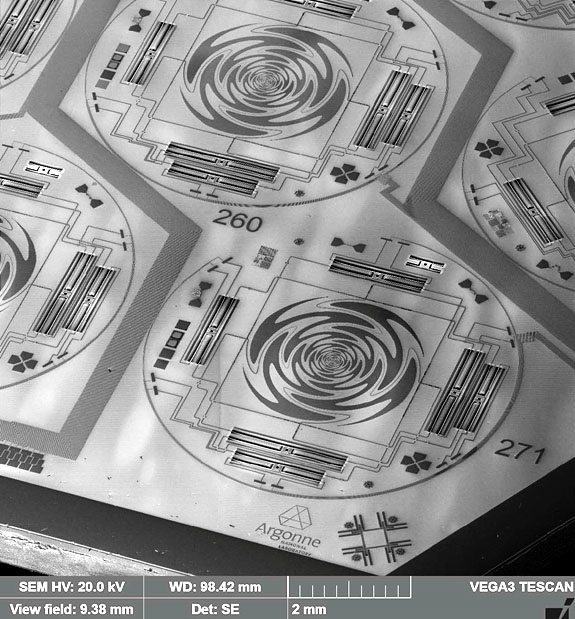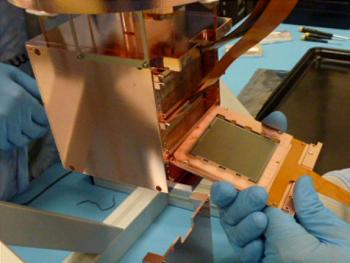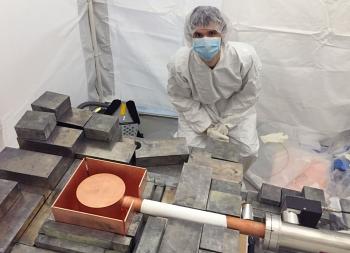One pixel of the SPT-3G detector. Each pixel measures X and Y polarization at three different frequencies -- 95, 150, and 220 GHz - using six superconducting bolometers With Experiments like SPTpol, DES, CoGeNT, and COUPP, the KICP began its "Pushing Cosmology to the Edge" Physics Frontier Center, well positioned to address the scientific puzzles of inflation, dark energy, and dark matter. The power of these experiments derives from major advances in detector technologies developed specifically to address the science goals. Even as these experiments are being carried out, the technology needed for the next generation of experiments must be developed. The Detector Development MA is a crosscutting element of the PFC; it will pursue advances in detectors by bringing together researchers expert in all aspects of the relevant detector technologies, experimental techniques, and their use for pursuing the Center's scientific goals.
To achieve the Detector Development MA goals its members pursue the following activities:
- Developing large bolometer detector arrays for CMB polarization measurements for the SPT-3G effort
- Developing large-mass, low-noise dark matter detectors such as the successor to CoGeNT, called C-4, and the new DAMIC experiment, both designed to search for very low mass WIMPs.



























